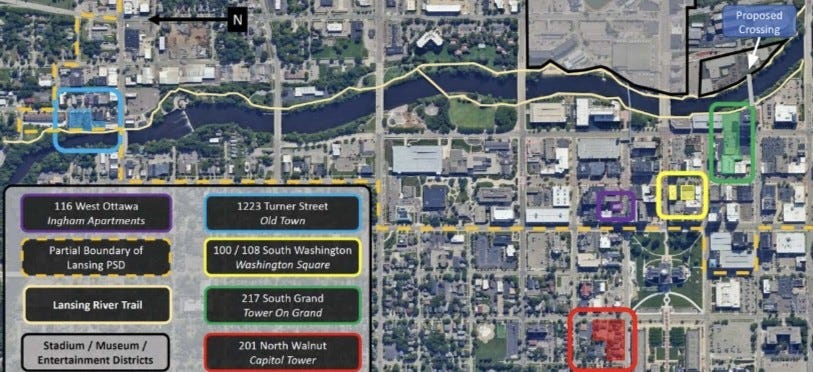The Lansing City Council recently gave the green light for a transformative real estate venture known as New Vision Lansing, marking the city’s first new skyscraper in decades. The council voted 7-1 to approve brownfield tax financing, a financial strategy designed to incentivize developers by mitigating the costs associated with developing properties on previously contaminated land. This pioneering project consists of five distinct building proposals that will include the Tower on Grand, which is expected to be the tallest building in Lansing. The city anticipates that these tax credits could yield millions of dollars in reimbursements for the developers over the next 30 years, alongside an estimated $15 million in benefits directly to the city government.
The financial backing for the New Vision Lansing project is considerable, with the total investment projected to exceed $300 million. This funding will primarily come from private investments, complemented by $40 million in support from the state, as well as the brownfield tax financing mechanism. The project’s proponents highlight its significance as the largest non-automotive investment in the Greater Lansing area’s history. A particularly promising aspect of the developments is the introduction of approximately 575 new housing units, addressing an ongoing housing shortage that has been affecting Lansing, further underscoring the project’s potential to revitalize the city’s downtown core.
Central to the project is the Tower on Grand—a 300,000-square-foot skyscraper anticipated to rise nearly 30 stories. The site for this skyscraper is located strategically between existing structures at 235 S. Grand Ave. and a nearby parking garage. Developer Paul Gentilozzi announced that immediate action would follow the financing approval, with demolition efforts slated to kick off by mid-January. The proposed timeline suggests that, by February, residents of Lansing may see a significant visible change with the emergence of a large excavation site, signaling the beginning of construction on this bold venture.
The New Vision Lansing initiative has evolved since its initial announcement in August 2023. Originally spotlighting three buildings, the plans have since expanded to encompass five buildings and a revised total project cost reflecting a 40% increase. A noteworthy addition is the construction of a seven-story mixed-use building in Old Town, a neighborhood adjacent to downtown Lansing. The Old Town development will feature about 1,500 square feet dedicated to retail, alongside five residential floors housing 80 units, with additional units situated in a parking facility—a total of approximately 61,000 square feet of space designed to enhance the urban landscape.
Despite overwhelming support for the project, some concerns were raised during council discussions. Council member Brian Jackson voted against the brownfield credits, emphasizing the importance of considering low-income housing options and Section 8 vouchers within the project’s scope. In response, the development team indicated that voucher usage would be accommodated for residents, ensuring accessibility for a wider range of income levels. This dialogue brings to light the critical balance of fostering economic development while ensuring that housing remains affordable for all segments of the population in Lansing.
Community engagement surrounding the New Vision Lansing project appears to be growing more positive. Previous complaints regarding the expansion into Old Town have largely dissipated, with local stakeholders voicing their support. Liane Zimny, representing the Grand Towers condo association, noted that their endorsement stems from the anticipated benefits of increased retail activity, dining options, and community services in the area. Council member Ryan Kost acknowledged the Gentilozzi family’s commitment to fostering community relations and outreach. As the project moves forward, final approval from state economic development entities for the transformational brownfield credits is expected in late January, setting the stage for Lansing’s skyline to evolve dramatically in the coming years.

